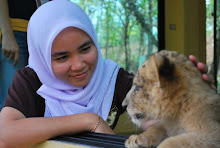School-Based Project!!!
Lesson Plan
Subject Mathematics
Topic Shapes and Spaces
Year 3 A
Time 7.40 – 8.40 am (1 hour)
Learning Area 3 D Shapes
Learning Objectives Understand and use the vocabulary related to 3-D shapes
Learning Outcomes By the end of the lesson, pupils should be able to:
i) identify various types of prisms
ii) label parts of prisms
A. Differentiation of content, process, and/or product (may be accommodations and/or modifications)
•Students will be working in groups to complete the application.
•Pre-determined groups will match students based on their differing abilities.
B. Learning Environment
•During instruction period, students will sit on the floor at the front of the classroom facing the whiteboard.
•During the application, students will work together in groups at their desks.
•During the application, teacher will circulate from group to group in order to ensure that all group members are on task.
C. Resources/Materials
•Story Book: Mummy Math: An Adventure in Geometry.
•Venn Diagrams
•3-D Shapes (prisms and pyramids)
Content (The What)
Teaching/Learning Strategies (The How)
A. Introduction (motivational steps/hook/activation of students’ prior knowledge) (10 min)
· Read Mummy Math an Adventure in Geometry by Cindy Neuschwander.
· Display book cover to students and have them predict what it will be about.
o Ask: “What might this book is going to be about?”
· During Read Aloud:
o Stop after reading page 7 (“...look at all these geometric solids”).
Ask students: “Which types of geometric shapes are on the wall?”
For support, encourage students to look around the classroom utilizing the math
bulletin board.
o Stop after reading page 10 (“...we’re totally lost”).
Ask students: “What do you think the clue was talking about when it said there
are many faces inside this pyramid?” o Stop after reading page 15 (“...look for six identical faces”)
Ask students: “Which geometry shape has six identical faces?”
· After Read Aloud:
o Ask Students: “How might you tell geometric shapes apart?”
Allow time for thinking.
B. Content for New Learning
Three-dimensional shapes.
o Cube
“A 3-D shape with 6 congruent square faces.”
o Prism
“A 3-D shape with opposite congruent bases; the other faces are 4-sided. Example: triangle-based prism”
o Pyramid
“A 3-D shape with a flat base; the other faces are triangles that meet at a vertex. Example: a rectangle- based pyramid”
o Sphere
“A solid shaped like a ball.”
o Cylinder
“A solid with 2 congruent circular bases joined by a curved surface.”
o Cone
“A solid with a circular base, a curved surface and a vertex.”
B. Teaching/Learning Strategies for New Learning (15 min)
Display each 3-D shape to the students and have volunteers provide the names for each figure and describe them.
o Ask: “What is this shape called?”
o Ask: “Who can describe the shape for
me?” o Ask: “Which shapes can you stack on
top of each other to make a
tower?”
Consolidation/Check for Understanding
(5 min)
• Ask students: “If you were describing a geometric shape to a friend, how might you do it? Which words would you use?”
Teaching and Learning Activities
(30 min)
Mathematics Activity:
Working in groups of four, students will sort geometric shapes based on two geometric properties. For example, prisms with more than 6 vertices, or pyramids with an odd number of vertices. Students will choose the appropriate organizer such as Venn Diagram.
Students will be asked to set up the two Venn Diagram hoops at their tables so that they can sort their geometry figures. Students will sort figures based on a rule that the group has come up with. Once all groups have the rule and have sorted their shapes according they will be asked to walk around the classroom trying to guess the rules at other tables. Students will record their finding on the attached handout entitled “Guess the Geometric Rule”
This activity can be accommodated by changing the amount of Venn Diagram hoops the students can use.
Assessment
•A rubric will be used for evaluation.
•Anecdotal notes will be made noting student participation, co-operation within the group, completion of activity and the creation of a rule.
Lesson Conclusion
(5 min)
•Students gather at the front of the classroom to discuss their thoughts on geometric shapes
•Ask students: “Name the different attributes that can be used to describe geometric shapes”
•Ask students: “Are there objects in the classroom that are geometry shapes? If so, name the object and describe its geometric properties”
Saturday, March 19, 2011
Subscribe to:
Post Comments (Atom)


No comments:
Post a Comment